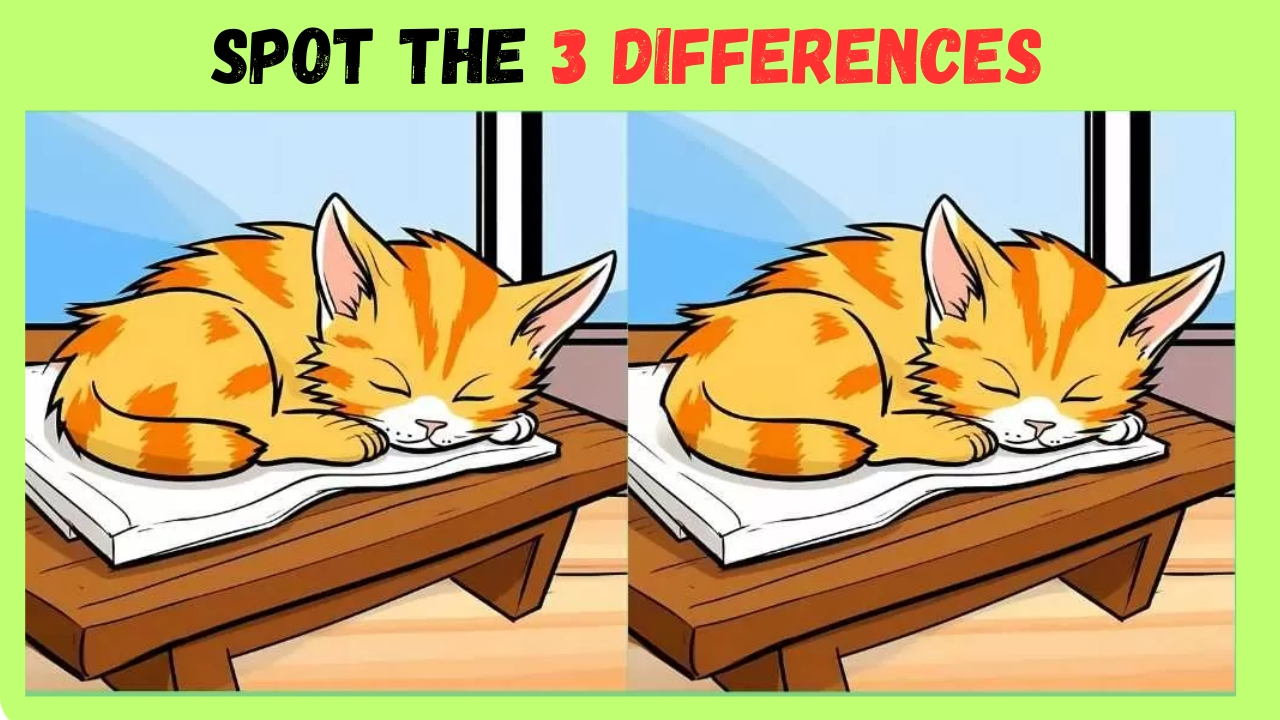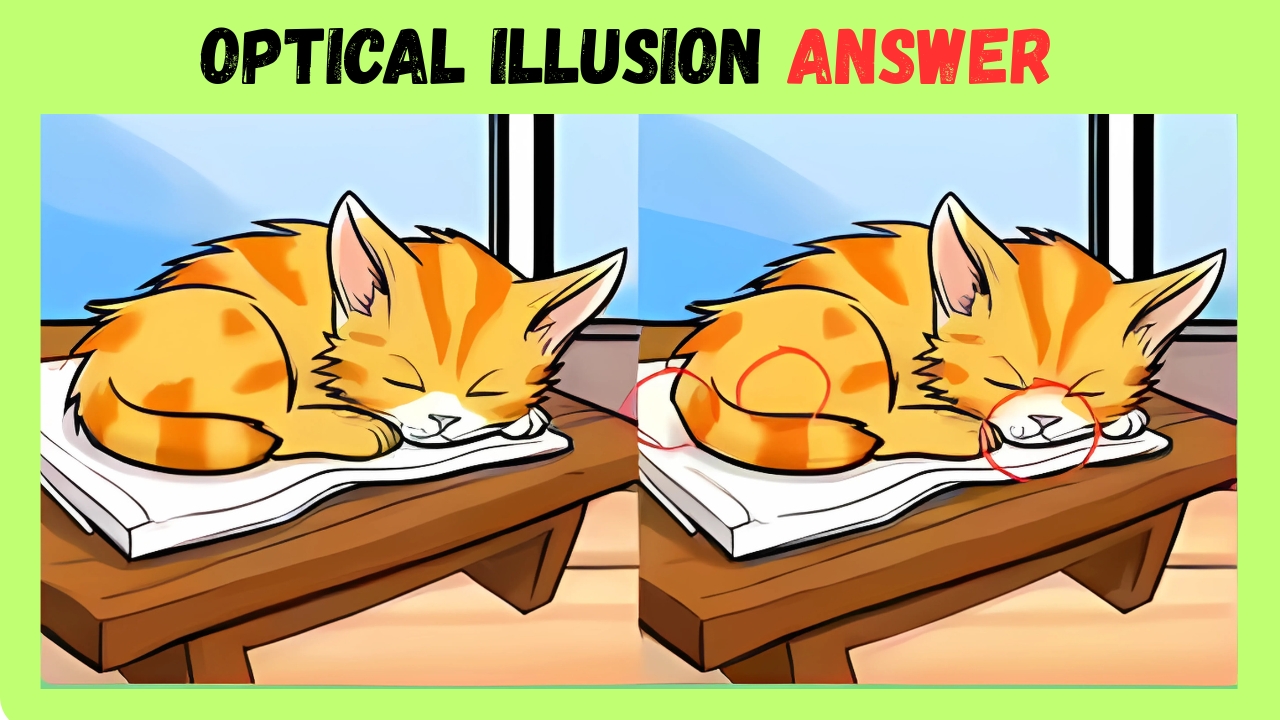Differences in Cats Pictures : Have you ever stared at two nearly identical images, convinced they’re exactly the same, only to suddenly notice a tiny detail that makes you question everything you thought you saw? Welcome to the fascinating world of spot-the-difference puzzles, where your brain becomes both detective and suspect in a delightful game of visual perception.
These brain-teasing challenges aren’t just entertaining time-wasters. They’re actually sophisticated exercises that put your observation skills through their paces while giving your mind a healthy workout. When featuring our feline friends, these puzzles become even more captivating because cats naturally draw our attention with their expressive eyes, graceful poses, and intricate fur patterns.
Understanding How Your Visual System Processes Information

To truly appreciate why these puzzles challenge us, let’s examine how your visual system actually works. Your brain processes visual information through multiple pathways simultaneously, each designed for different purposes. The pathway responsible for recognizing objects prioritizes speed over accuracy, which explains why you can instantly identify a cat in an image without consciously analyzing every whisker or stripe.
This recognition system relies heavily on pattern matching and expectation. When you see the first cat image, your brain creates a mental template of what it expects to see. Upon viewing the second image, instead of processing it completely fresh, your brain compares it against this template and often concludes “cat detected, moving on” before thoroughly examining the details.
Understanding this process helps explain why differences seem to “pop out” suddenly after staring at images for several minutes. You’re essentially training your brain to override its efficient shortcuts and engage in slower, more methodical processing. This shift from automatic to controlled attention represents a fundamental change in how your visual system operates.
Step-by-Step Strategy for Visual Detective Work
Let’s break down a systematic approach that transforms random looking into structured searching. First, establish a mental grid system by dividing each image into six equal sections – top left, top center, top right, bottom left, bottom center, and bottom right. This methodical sectioning prevents your eyes from jumping randomly and ensures comprehensive coverage.
Begin with the most detail-rich areas, typically faces and central subjects. Examine each facial feature individually: are the eyes identical in size and shape? Do the ears point in exactly the same direction? Count whiskers on each side if visible. This granular approach might seem tedious, but it trains your brain to process visual information more systematically.
Next, expand your focus to examine edges and boundaries. Differences often hide along the borders where objects meet backgrounds or where colors transition. Your peripheral vision is actually more sensitive to change than your central vision, so occasionally allow your eyes to soften their focus while scanning these transition zones.
Here’s a mental exercise to strengthen your observation skills: before looking for differences, spend thirty seconds studying the first image alone. Mentally catalog five specific details you notice – perhaps the curve of the cat’s tail, the position of its paws, or background elements. This pre-analysis creates a more detailed mental reference point for comparison.
Why Cats Make Perfect Puzzle Subjects
Cats offer puzzle creators a rich canvas of visual complexity. Their whiskers, ear positions, tail curves, and facial expressions provide numerous opportunities for subtle modifications. A whisker might be shortened, an ear slightly repositioned, or a stripe pattern altered in ways that challenge even the most observant viewers.
The emotional connection we have with cats also plays a role in puzzle difficulty. We’re naturally drawn to feline faces and expressions, which can both help and hinder our detective work. While we might quickly notice changes in a cat’s eyes or expression, we might completely overlook modifications to background elements or less prominent features.
Building Your Visual Detective Skills
Like any skill, becoming better at these challenges requires practice and patience. Start by giving yourself adequate time without rushing. Many people abandon these puzzles too quickly, missing differences that would become apparent with a few more minutes of careful observation.
Try adjusting your viewing distance or angle slightly. Sometimes differences become more apparent when you’re not looking directly at the screen or page. This technique works because it engages different parts of your visual processing system and can reveal patterns or changes that aren’t obvious from your normal viewing position.
The Unexpected Benefits of Visual Puzzles
Regular practice with spot-the-difference challenges can improve your attention to detail in everyday situations. People who regularly engage with these puzzles often report noticing things in their environment that they previously overlooked. This enhanced awareness can be particularly valuable in professional settings where attention to detail matters significantly.
These exercises also provide excellent stress relief. The focused concentration required creates a meditative state similar to mindfulness practices. When you’re completely absorbed in scanning for differences, everyday worries naturally fade into the background, giving your mind a refreshing break from daily concerns.
Optical Illusion Answer

Remember that these challenges aren’t competitions against time or other people – they’re opportunities to engage with your own visual processing abilities. If you find a particular puzzle frustrating, take a break and return to it later. Fresh eyes often spot things that tired eyes miss completely.
Don’t feel discouraged if some differences seem impossible to find. Puzzle creators sometimes include extremely subtle changes that require exceptional attention to detail. The goal isn’t to find every difference perfectly every time, but rather to enjoy the process of looking carefully and appreciating the intricate details that make up visual information.
Whether you solve these puzzles quickly or take your time savoring each detail, you’re engaging in a valuable mental exercise that sharpens your perception and provides genuine entertainment. So next time you encounter a spot-the-difference challenge featuring cats or any other subject, embrace the opportunity to see the world through more attentive eyes.